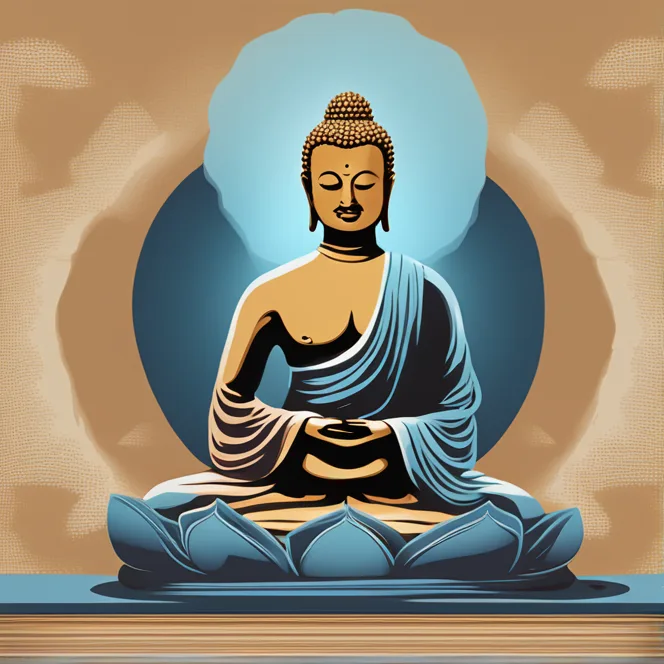
Meditation: Exploring The Origins
Delve into the roots of mindfulness meditation and its journey from ancient practices to modern wellness.
article by Hina Kurosawa
Ancient Beginnings
The practice of mindfulness meditation is often considered an integral part of Buddhism, deeply rooted in ancient wisdom that dates back thousands of years. The origins of mindfulness are commonly traced to the teachings of Siddhartha Gautama, who became known as the Buddha, around the 5th century BCE. Mindfulness, under the Pali term 'sati,' forms a cornerstone of the Buddhist path, emphasizing the importance of being present and fully engaged with whatever we experience without judgment. It is a practice designed to cultivate a clear, non-reactive awareness of the realities of the moment, both within and around us.
Expansion Across Cultures
Although mindfulness meditation is routinely associated with Buddhism, it's important to note that other cultures independently nurtured similar practices. For example, Taoist China and Vedantic India embraced methods of present-moment awareness as well. The essential human quest for inner peace and insight seems to have led to parallel developments in different civilizations. Despite regional variations, a common thread woven through all these methods is the use of the mind to observe the self and cultivate a state of equanimity.

Mindfulness in the Modern Era
In the 20th century, mindfulness meditation moved Westward, largely through the diaspora of Asian communities and the interest of early adopters from Europe and America. It gained significant traction in the 1970s when Dr. Jon Kabat-Zinn, a molecular biologist, integrated mindfulness with scientific research and clinical practice, pioneering the Mindfulness-Based Stress Reduction (MBSR) program. His work introduced the practice to a broader audience, stripped of religious context, and focused on its therapeutic benefits, making it accessible to people of all backgrounds.
Contemporary Practice and Science
Today, mindfulness has permeated many facets of Western society, from psychology and medicine to business and education. Scientific studies continue to investigate its potential to promote mental and physical wellness, examining its effects on the brain, stress response, and overall health. As a result, mindfulness meditation, once an exclusive religious practice, has evolved into a universal tool for self-improvement and understanding. Its growth reflects an enduring human desire to seek peace amidst life's challenges.

Astrological Perspectives
Looking ahead to 2024 and beyond, mindfulness meditation remains a practice complementing individual astrological journeys. As each zodiac sign encounters unique transits and challenges, mindfulness can serve as a grounding technique to navigate life's vicissitudes. For instance, during a Saturn return, a period known for its difficulty and growth potential, mindfulness can help individuals stay centered and cope with the stress that such astrological seasons may bring.
Future Integration and Adaptation
As we gaze into the future, the adaptability of mindfulness ensures its continuous integration into various cultural contexts and personal routines. Whether it's enhancing daily tasks or providing a foundation for spiritual exploration, this ancient practice promises ongoing relevance and transformational impact. Mindfulness meditation will continue to evolve, shaped by the needs and insights of those who walk the path of self-awareness and well-being.
Published: 12/14/2023
Modified: 12/14/2023
More predictions
Come back here soon to learn more about yourself and your future


Achieving Mindfulness Without Meditation
Discover practical ways to cultivate mindfulness in everyday life without the need for traditional meditation practices.


Calming Waves: Meditation For Stress Relief
Meditation techniques to help foster inner peace, alleviate stress, and enhance wellbeing in today's fast-paced world.


Meditation Techniques & Stress Relief
Discover effective meditation methods to alleviate stress and enhance well-being, suitable for beginners and seasoned practitioners alike.